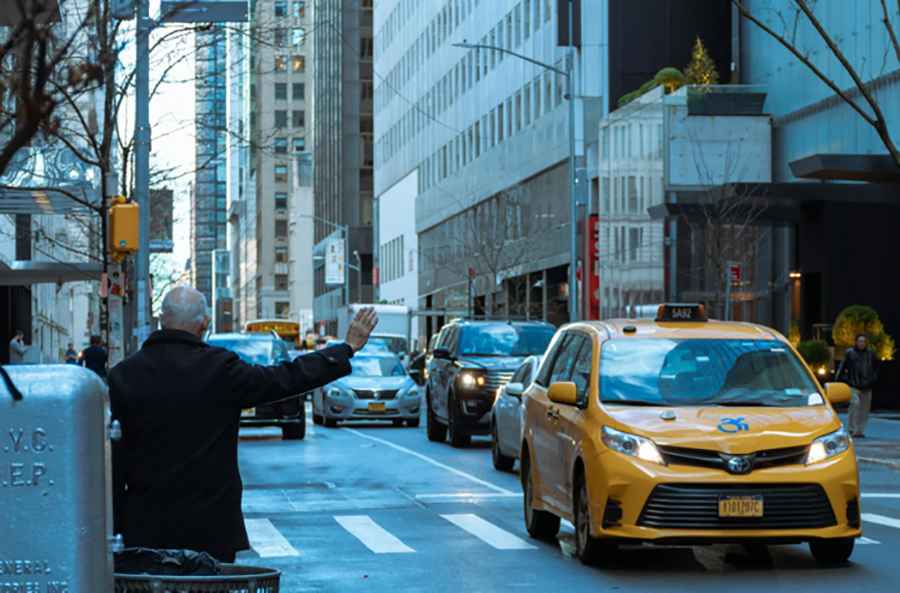7 Common Taxi Scams To Watch Out For
If you're exhausted from fearing getting scammed every time you get into a taxi, you're not alone.Falling victim to a taxi scam is a frustrating experience that can put a damper on an otherwise perfect day. It doesn't matter if you're a tourist or a local; scammers tend to take advantage of everyone. Fret not! If you know what to watch out for, you can avoid getting scammed most of the time.

The most common scams in the taxi industry
Although the global taxi market was valued at $69.18 billion in 2019 and is projected to reach $120.89 billion by 2027, scams are as old as the service itself.
Let's dive into the top 7 scams you might find all around the world.
1. The broken meter scam
The broken meter scam has existed from the moment taxi meters have been around. The driver claims that the meter is broken, and they overcharged the passenger.
Check that the meter is working as soon as you get in the taxi. If it breaks mid-ride, get out of the vehicle and find someone else. Of course, be polite and respectful but firm.
Don't be afraid of this, especially assert your rights as a passenger. If you're confident in yourself, it will help a lot when dealing with an aggressive driver. If things escalate, contact the authorities and ask them for help.
2. Going the long way
Long-hauling is what happens when a driver takes you around the longer way, unnecessarily, just to rack up the fare. Combat this by using the GPS on your phone to orient yourself and even suggest alternative routes.
If you think you're being long-hauled, speak up! Don't be afraid. Tell them that this isn't the road you prefer, and speak calmly. If you're anxious, here's what you can do:
- Check out alternative routes and compare them with the one your driver is taking.
- Track the journey with a GPS and see if the map suggests a shorter way. Make sure the driver stays on course.
- Share the route with others or with the driver themselves, to avoid misunderstandings.
3. Fake bills
Unscrupulous drivers all over the world might try to give you fake change by using counterfeit bills. Prevent this by double-checking their bills and giving them no opportunity to give you change at all.
If you're suspicious, politely indicate that they might have accidentally given you fake bills and ask them to change them. Don't feel the pressure to accept this money if you think it might be fake!
Better safe than sorry.
4. Unlicensed taxis
There are a lot of unlicensed Taxis in the world, and unfortunately, it's not always easy to spot them, especially if they're around tourist areas or airports.
Make sure to take taxis from reputable taxi-hailing apps or go to taxi stands. Generally speaking, real taxis have their ID on display, and they have regulated meters as well.
Some taxis might offer cheaper rides, but they're risky and often not worth the trouble. It's best to adhere to safety standards, especially if you're traveling.
If someone is posing as a taxi driver, they will probably offer you a ride directly. These people can be a threat; there's no way of putting it. Never, ever ride with someone who's offering to take you anywhere without you asking.
5. Negotiating fares
In many places in the world it is common to negotiate the price of a ride before you get into the taxi. Some of these drivers might start their negotiation with exorbitant prices.
Make sure to do your research before you travel to a new place, and negotiate confidently. If you don't agree, find another taxi.
Don't be afraid to walk away if necessary; there will always be another taxi nearby. Here's what you should do:
- Research fair prices: before starting to bargain, ensure you know what you're talking about.
- Don't be afraid to reject unfair prices: the driver might relent, or you might have to find another taxi. In any case, you won't have to deal with expensive prices.
- Use cash to your advantage: when you pay with cash, some drivers might be encouraged to lower the prices.
6. The "closed" ATMs
Some drivers claim that ATMs are closed or broken, and this is their queue to start pressuring you to pay with cash. Insist on finding a different payment method or ATM. You can even request to use a credit card if nothing else is available.
Consider getting more information about “How does a VPN work?” and use one on your smartphone when accessing sensitive information, such as banking apps or websites, to protect your data from potential hackers. You can even pay with your phone!
Don't let the common pressure tactics affect you. Find another taxi or an alternative payment option. Trust your instincts at all times; if you don't feel safe, walk away. Legitimate drivers will help you if they can, and they will have more than one payment option.
7. Extra surprising charges
Be wary of additional charges that appear on your bill, like "airport fees" or "late-night surcharges."
Remember that the global number of users in the 'Ride-hailing' was forecast to continuously increase between 2024 and 2028 by in total of 217.6 million users: a lot of people can be victims of scams, including yourself. It has nothing to do with intelligence levels!
Before you start your journey, make sure to speak with the driver and clarify if there are strange charges. Never pay for extra unauthorized fees, and report the driver if you must.
Above all, be assertive. They must understand that you won't be cowed by their bad attitude.
Conclusion
Taxi scams shouldn't ruin your day or your travel experience. Stay informed and pay attention so you can avoid falling for the most common taxi scams. Your safety is paramount in these circumstances.